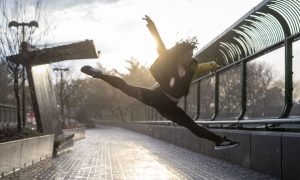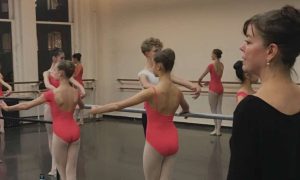Think of your resume and your calling card. In many ways, it’s as important as your headshot in an audition setting. So much emphasis is placed on headshots — what photographer to shoot with, how to do your hair and makeup, what to wear. But a thorough, clean and professional resume is just as vital in helping you land the job.
Your resume should be printed in legible black ink on plain white paper cut, like your headshot, to measure 8 x 10 inches. Casting directors usually prefer a separate resume paper stapled to your headshot (rather than simply printing your resume on the back of your headshot) so they can tear it off, if needed. Here is a list of other necessities and optional add-ons to make your resume stand out from the crowd (in a good way!).
NECESSARY
Make your name big and bold at the top of your resume. This should be your full first and last name or your stage name/name you prefer to be called.
Below your name, list your contact information (if you’re with a dance agent, put their logo and phone number in the upper corner. In this case, you do not need your personal contact information on your resume). Include your email address (make sure it’s a professional looking email and not something like luvs2dance@yahoo.com) and telephone number. Do not list your home address. You can also add your Instagram handle or website if they are relevant to you as a performer.
Make headings for your credits. These can include Broadway, commercial/print, regional theater, music videos, dance concerts, film/TV and so on. Under each heading, list the title of the project, your role and the production company (and director/choreographer, if applicable). Include important information like if you worked as a dance captain, served as an understudy (and note if you went on for the role) or performed original choreography. Be mindful to spell names correctly!
Add your special skills at the bottom of your resume. So many projects nowadays ask for unique talents like roller-blading, pointe, aerial work and more! This is your space to really show off the stuff that might not be featured in your credits but sure do make you stand out from the crowd. Whether it’s yodeling, sports, accents, gymnastics or musical instruments, this is the spot to list it!
OPTIONAL
Include your dance training after your credits. Note where you attended college (if you studied dance or theater) or conservatory/summer intensive programs. List recognizable teachers and techniques such as vogueing, rhythm tap and Fosse style.
Write your “stats” under your contact information at the top of your resume. It’s recommended that you include height, hair color and vocal range. But you can also add weight and eye color if you’re going in for more commercial or modeling work. And most importantly…don’t lie! You never know when the music director might ask you to hit your high note or the choreographer will post a piece of tape on the wall to check your height. Misrepresenting yourself won’t score you any points in an audition.
If you want, you can insert a small dance photo or contrasting headshot in the top corner of your resume. This is completely optional, but it’s always good to remind a casting director of your beautiful face.
Even if your resume is sparse, keep it clean and professional. Don’t fluff it up with serif fonts, performances you did when you were eight years old or a list of every dance teacher you’ve ever had. Remember that your resume should always be growing and adapting. You will add, subtract and edit your resume many times throughout your career — and that’s a beautiful representation of your journey as a dancer.
By Mary Callahan of Dance Informa.













